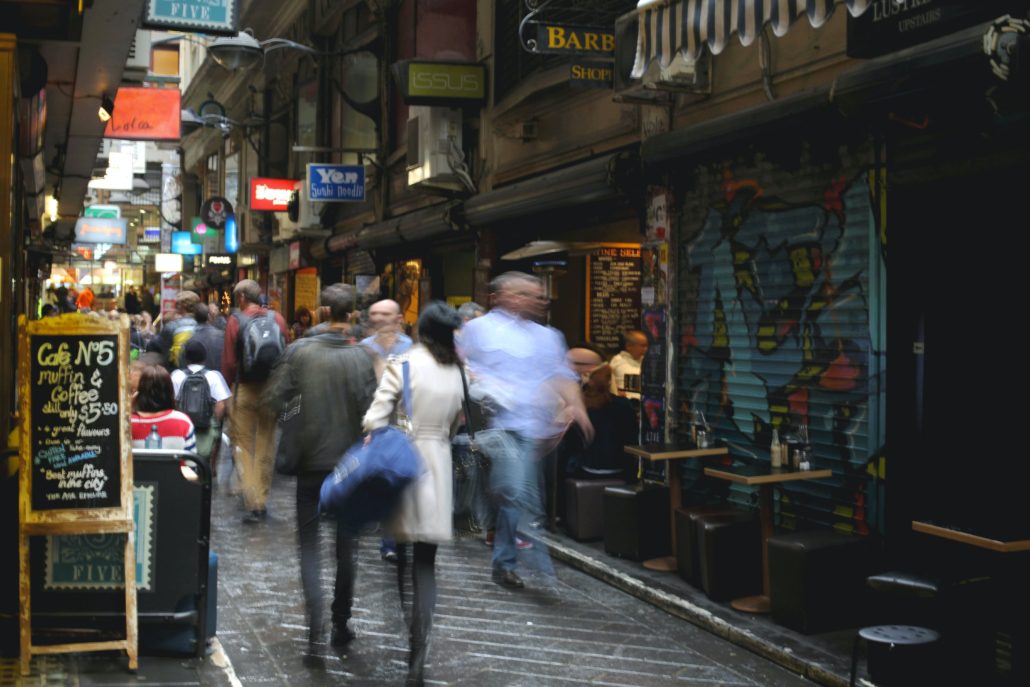A Look Down Under at Laneways

One of the main attractions in Melbourne, Australia is undeniably its City Centre laneways. Once existing as purely functional areas, in the 1990’s the Government introduced policies to reimagine Melbourne’s laneways. The aim was to create exciting cultural and retail destinations in the Central Business District (CBD) to draw activity back into the city from suburban shopping centres.
The local policy promotes the inclusion of art, landscaping, street furniture and activity space to bring vibrancy with al fresco dining adding to this atmosphere. New developments are encouraged to provide small-scale tenancies at ground level to support a unique trading environment. The laneways are characterised by an abundance of local independent operators. These operators benefit from a city centre location without the cost of main street rents, adding diversity to the city’s retail core.
The policy in Melbourne recognises four core values that support the laneways’ success in attracting pedestrian movement and activating underutilised space.
- Physical Connectivity: Connection through a city block.
- Views: From the lane’s public realm towards a connecting street or landmark.
- Elevational Articulation: Architectural character of the buildings and the aesthetic and spatial interest to the public realm.
- Active Frontages: Frontages that provide for visual and physical interaction between the public space and the building.
So what can we learn from these policies for our cities in Ireland? Laneways are a common feature within Irish cities and towns. They are generally associated with servicing, bins, and anti-social behaviour, causing them to deflect rather than attract activity. We can see from policies introduced in Melbourne, that there is an opportunity to enhance our laneways while supporting our cities. They could act as extensions of retail streets, encouraging the circulation of shoppers, dwell zones and a destination for unique retail and food and beverage offers.
Led by policy, we can create vibrant and exciting spaces in Irish city centres. The Bannon Consultancy Team highlighted these opportunities in a Retail Study carried out for the Dublin City Council Development Plan 2022 – 2028. The private sector can play a role. Property owners with significant frontage to a laneway could activate and provide an exciting new space for the public to enjoy, creating rental value from previously underutilised space. We need to think creatively to develop our cities.
Author: George Colyer, Surveyor, Bannon
Date: 31st January 2023





